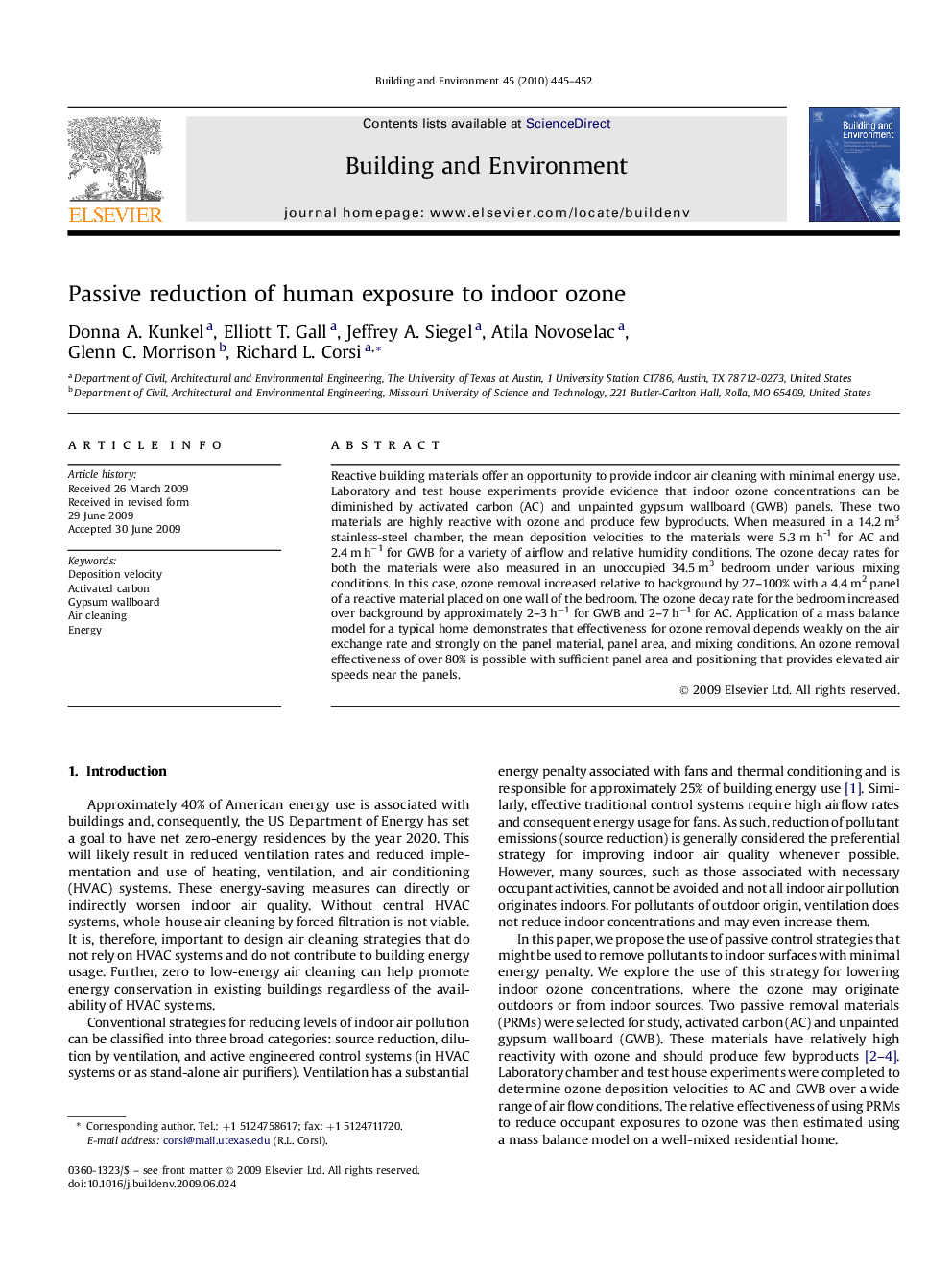| کد مقاله | کد نشریه | سال انتشار | مقاله انگلیسی | نسخه تمام متن |
|---|---|---|---|---|
| 249172 | 502599 | 2010 | 8 صفحه PDF | دانلود رایگان |

Reactive building materials offer an opportunity to provide indoor air cleaning with minimal energy use. Laboratory and test house experiments provide evidence that indoor ozone concentrations can be diminished by activated carbon (AC) and unpainted gypsum wallboard (GWB) panels. These two materials are highly reactive with ozone and produce few byproducts. When measured in a 14.2 m3 stainless-steel chamber, the mean deposition velocities to the materials were 5.3 m h-1 for AC and 2.4 m h−1 for GWB for a variety of airflow and relative humidity conditions. The ozone decay rates for both the materials were also measured in an unoccupied 34.5 m3 bedroom under various mixing conditions. In this case, ozone removal increased relative to background by 27–100% with a 4.4 m2 panel of a reactive material placed on one wall of the bedroom. The ozone decay rate for the bedroom increased over background by approximately 2–3 h−1 for GWB and 2–7 h−1 for AC. Application of a mass balance model for a typical home demonstrates that effectiveness for ozone removal depends weakly on the air exchange rate and strongly on the panel material, panel area, and mixing conditions. An ozone removal effectiveness of over 80% is possible with sufficient panel area and positioning that provides elevated air speeds near the panels.
Journal: Building and Environment - Volume 45, Issue 2, February 2010, Pages 445–452